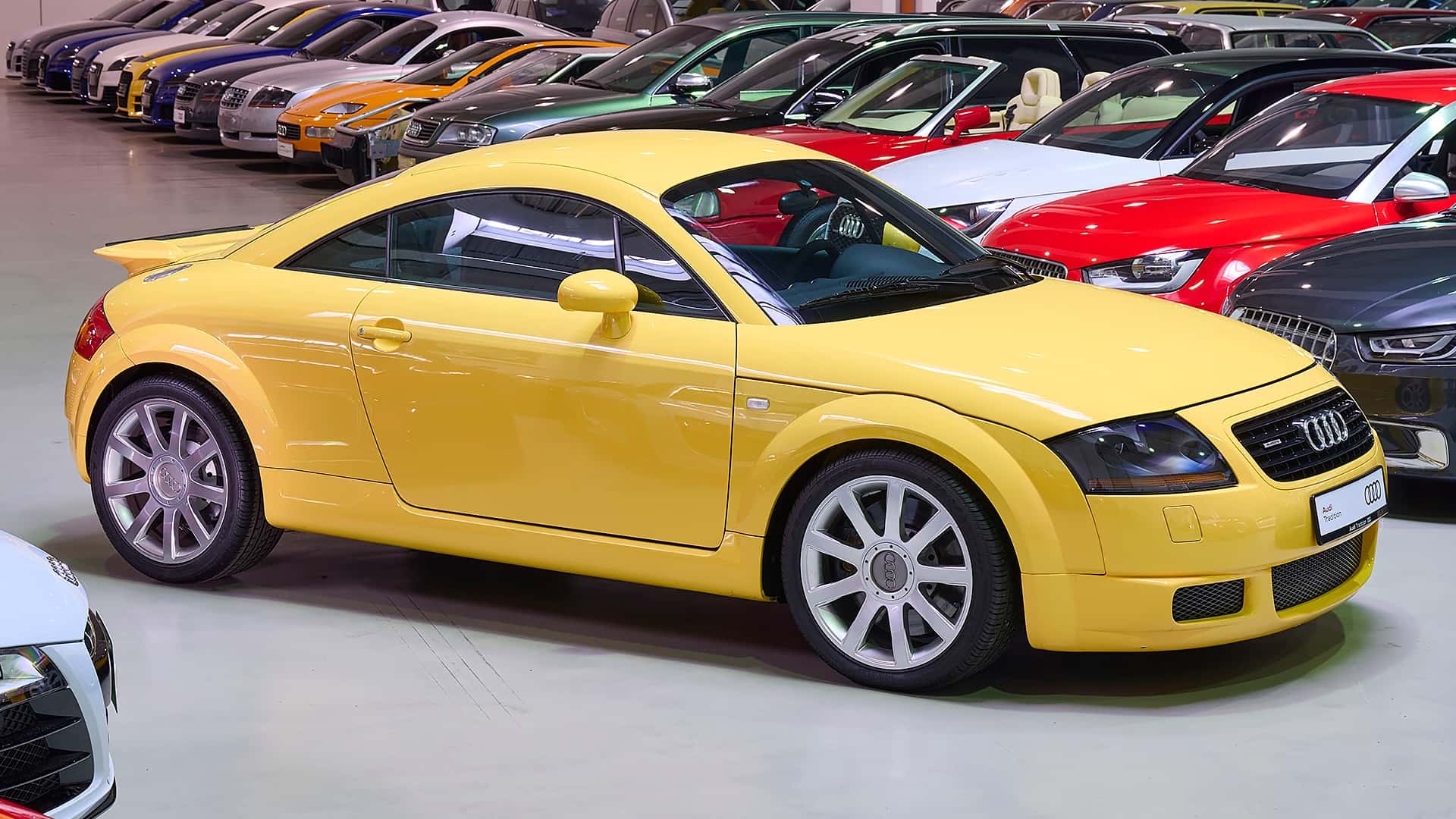
The late Ferdinand Piëch may have ruled with an iron fist, but he ensured things got done. During his tenure as CEO of the Volkswagen Group from 1993 to 2002, some of the company’s most ambitious engineering projects were approved, culminating in the development of the Bugatti Veyron. He left behind a complicated legacy that included costly vanity efforts, such as the VW Phaeton, and visionary projects like the XL1.
Even before taking the helm of the automotive giant, Piëch played a pivotal role in developing several iconic cars. As Head of Development at Porsche and later at Audi, he was deeply involved in projects like the legendary 917 and Quattro race cars. His drive to explore new ideas continued until the very end of his leadership, and this TT lookalike serves as a prime example.
Despite its familiar silhouette, it's not really a Tourist Trophy. Photographed by rare_cars_deutschland, the one-off took about eight months to complete and resulted from merging an original TT body with a first-generation RS4 Avant. Essentially, it was a B5 RS4 topped with an 8N-generation TT body. By now, you’re probably wondering why.
At the turn of the century, Audi was toying with the idea of a sports car positioned above the TT. The R8 didn’t exist yet, as the Lamborghini Gallardo’s sister model wouldn’t even be previewed until the 2003 Le Mans Quattro concept before entering production in 2006. To test the waters, Audi engineers combined the RS4 Avant’s underpinnings with the TT’s compact body. And by underpinnings, we mean just about everything: axles, engine, rear differential, wheels, transmission, and more.

To make the swap work, engineers shortened the chassis by 6.7 inches (170 millimeters) ahead of the fuel tank to match the TT’s wheelbase and preserve its proportions. Beneath the hood sat the RS4’s twin-turbo 2.7-liter V-6 engine, making this prototype the only TT ever to use a true V-6, considering the first two generations relied on VR-6s. Side note: The VW Group didn't stop making VR-6 engines until late 2024.
Notably, the V-6 was mounted longitudinally, unlike the transverse layout of regular TTs. The drivetrain also switched from a Haldex differential to a more rear-biased Torsen system borrowed from the RS4. With 375 hp and 325 lb-ft (440 Nm) of torque channeled to all four wheels through a six-speed manual gearbox, the “TT Coupe RS4” was a serious performer.
Unsurprisingly, performance was strong. This was, after all, more RS4 than TT. It sprinted to 62 mph (100 km/h) in 4.9 seconds and reached a top speed of 174 mph (280 km/h). The platform swap did add some mass, bringing the curb weight to 3,417 pounds (1,550 kilograms), although the later VR-6-powered TT, launched in 2003, was only marginally lighter.
Audi TT Coupe RS4







In a 2013 interview with the now-defunct Fortitude website, former quattro GmbH (now Audi Sport) product chief Stephan Reil called the TT Coupe RS4 “unbelievably fun to drive” and said it “was out-performing a 911 at the time.” The car was heavily tested, accumulating nearly 12,500 miles (20,000 kilometers).
As the Piëch era came to a close, the idea of a production version proved too costly to justify. The Volkswagen Group ultimately achieved its goal of building a supercar above the TT through the R8, twinned with the Gallardo. Both the TT and R8 have since been discontinued, but Audi plans to return to the sports car segment with a production version of the Concept C in 2027. This time, entirely electric.







